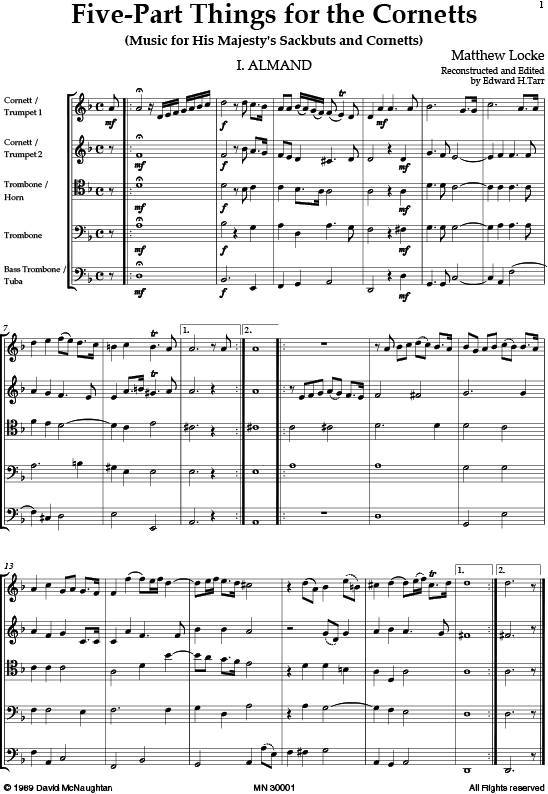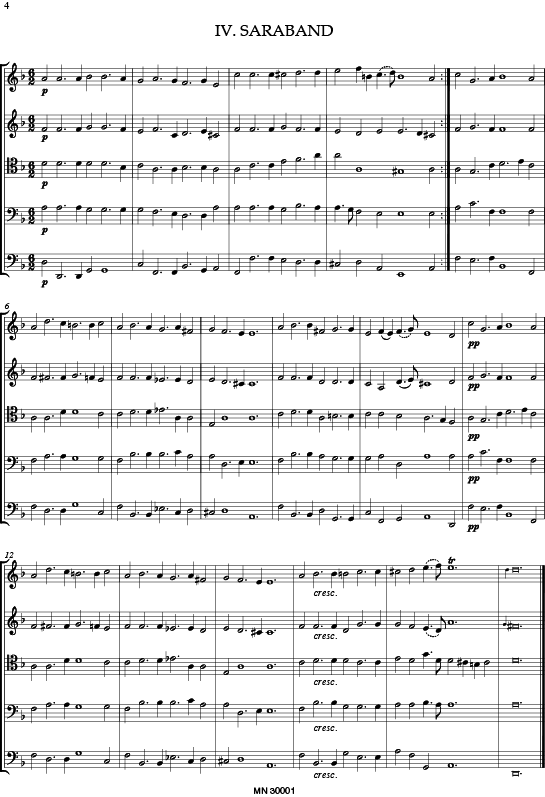
Locke Five-Part Things for the Cornetts
Difficulty (I-VI): IIIParts for:
Parts I + II: Cornetto/Trumpet in C; Trumpet in B-flat (2 copies each, double part)
Part III: Alto Trombone; Horn in F; Euphonium in B-flat
Part IV: Tenor Trombone, Tenor Horn in B-flat
Part V: Bass Trombone; Tuba; E-flat Tuba
Series: Edward Tarr Brass
Editor: Edward H. Tarr
Matthew Locke (1621/22-1677), perhaps the most important English musician of his generation, wrote music of all genres: chamber music, dramatic music, church music, and keyboard music. Although his conversion to Catholicism, which took place shortly after he finished his training at Exeter Cathedral, would normally have been a handicap in Protestant England, Locke always moved in the highest circles and was a favorite of King Charles II (who of course had married a Catholic, Catarina of Braganza). At the time of the Restoration in 1660, Locke was immediately given several highly important positions, reflecting the new Court musical organisation along French lines: Private Composer to the King, Composer to the Royal Wind Music (a position of particular interest to us in connection with the present edition), and composer for the king's 24 violins. Two years later he also became the queen's organist.
The Five-Part Things for the Cornetts (also known under the title "Music for His Majesty's Sackbutts and Cornetts") were written for the royal wind music (cornetts and sackbuts), and according to tradition, they were originally performed for the processions and other events on the day preceding Charles lI's coronation (that is to say, on the 22nd of April, 1661). As far as the form is concerned, the "things" form a suite in seven movements consisting of almands and courants in alternation, with a sarabande in the middle. This edition presents Locke's suite for the first time in the complete original succession of movements, as it is to be found in the manuscript MU. MS. 734 in the Fitzwilliam Museum, Cambridge. The 7th movement -- to which the middle parts were reconstructed -- appears here in print for the first time. The reconstruction of the missing third part, except for the 1st movement and the 1st half of the 2nd, together with all trill marks and dynamic indications, are by the editor; editorial slur marks are in dotted lines. (Dynamics have been as sparsely indicated as possible, to give at least a hint as to the movements' possible character but so as not to interfere with an artistic interpretation). Our edition enables performances using the original instrumentation or a variety of combinations of modern instruments; see the individual part listing above.



